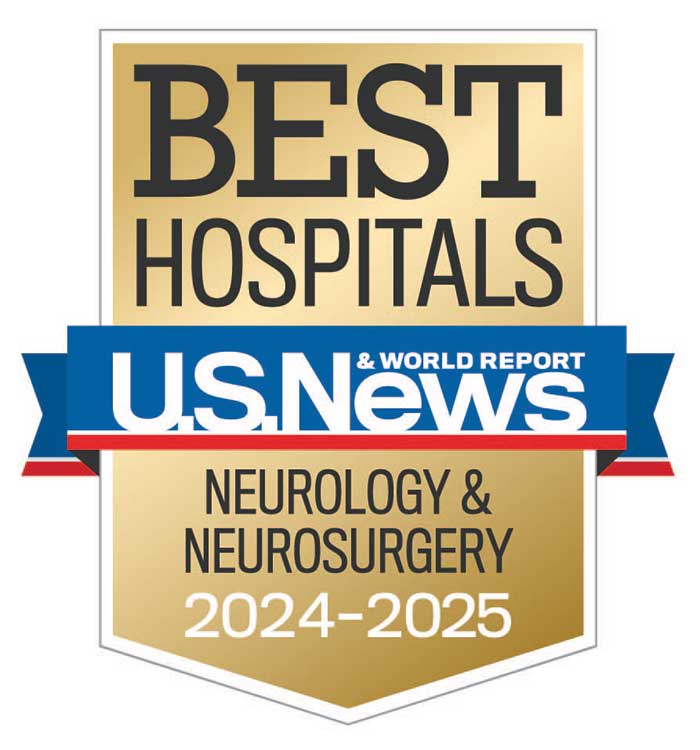Multi-Disciplinary Approach and Collaborative Research Spawn Innovations, New Fellowship in Peripheral Nerve Program
The peripheral nerve program at Penn State Neuroscience Institute uses nerve transfer procedures to treat complex cases. Division Chief of Peripheral Nerve Surgery, Kimberly S. Harbaugh, MD, explains one option, “Oberlin transfer is a procedure in which the clinician harvests part of one of the nerves from the hand and transfers it to the nerve in the patient’s bicep muscle. In this way, we have been able to restore significant levels of elbow flexion.” This has multiple potential applications, even in patients with spinal cord injuries. A portion of the nerves that are still intact above the level of the injury can be transferred to areas below the injury. In this way, spinal cord injury patients may be able to reclaim some finger and hand function, leading to improved self-care options.¹
Assistant Professor of Neurosurgery, Elias B. Rizk, MD, MSc, details a recent case: “I had a male patient in his mid- 20s with a direct injury to his brachial plexus. He had been in a car accident, and in a state of semi-consciousness, he tried to release himself by using a pocket knife. He stuck it into his chest wall, severing one of the nerves to the arm. As a result, he lost his functional elbow movement. After six months, we elected to do an Oberlin nerve transfer to his bicep muscle. He had a very good recovery, with restoration of elbow flexion, and is now back to work.”
Staffed by neurosurgeons, neurologists, and multiple other specialists, the peripheral nerve program incorporates electrodiagnostic testing, the most advanced imaging technology, surgical management options, physical and occupational therapy, and pain management services to form a customized treatment plan for each patient. This array of services enables Penn State Hershey to appropriately treat not only common peripheral nerve problems, such as carpal tunnel and ulnar nerve entrapment, but also neuromuscular disorders, tumors, pediatric brachial plexus injuries, traumatic nerve injuries, and more complex entrapment neuropathies. Additionally, the program has a well-established research arm and works closely with researchers in the area of nanotechnology, which may eventually be used in the treatment of malignant peripheral nerve tumors.
One of the most unique aspects of the Penn State Hershey peripheral nerve program is its recently approved peripheral nerve fellowship, with the only other program in the country existing at the Mayo Clinic. Harbaugh concludes, “Not only is the fellowship training and expertise unique, but we also have access to practitioners with specialty expertise throughout the Medical Center to help us improve management of patients requiring peripheral nerve intervention.” These advancements add to the capabilities of the peripheral nerve program as it continues to grow.

Kimberly S. Harbaugh, MD
Professor of Neurosurgery
Chief, Division of Peripheral Nerve Surgery
Phone: 717-531-3828
Email: kharbaugh@pennstatehealth.psu.edu
Residency: Neurological surgery, Dartmouth Hitchcock Medical Center, Lebanon, N.H.; General surgery, Dartmouth Hitchcock Medical Center, Lebanon, N.H.
Medical School: University of California - San Diego, School of Medicine, San Diego, Calif.
Connect with Kimberly S. Harbaugh, MD, on Doximity

Elias B. Rizk, MD
Associate Professor, Department of Neurosurgery, Penn State Cancer Institute
Phone: 717-531-3828
Email: erizk@pennstatehealth.psu.edu
Fellowship: Neurological surgery, Pediatrics, Birmingham Children’s Hospital
Residency: Neurological surgery, Penn State Health Milton S. Hershey Medical Center
Medical School: American University of Beirut Medical Center
Internship: Surgery, General, Penn State Health Milton S. Hershey Medical Center
Connect with Elias B. Rizk, MD, on Doximity
References
- Bertelli JA, Ghizoni MF. Nerve transfers for elbow and finger extension reconstruction in midcervical spinal cord injuries. J Neurosurg. 2015 Jan;122(1):121-7.

